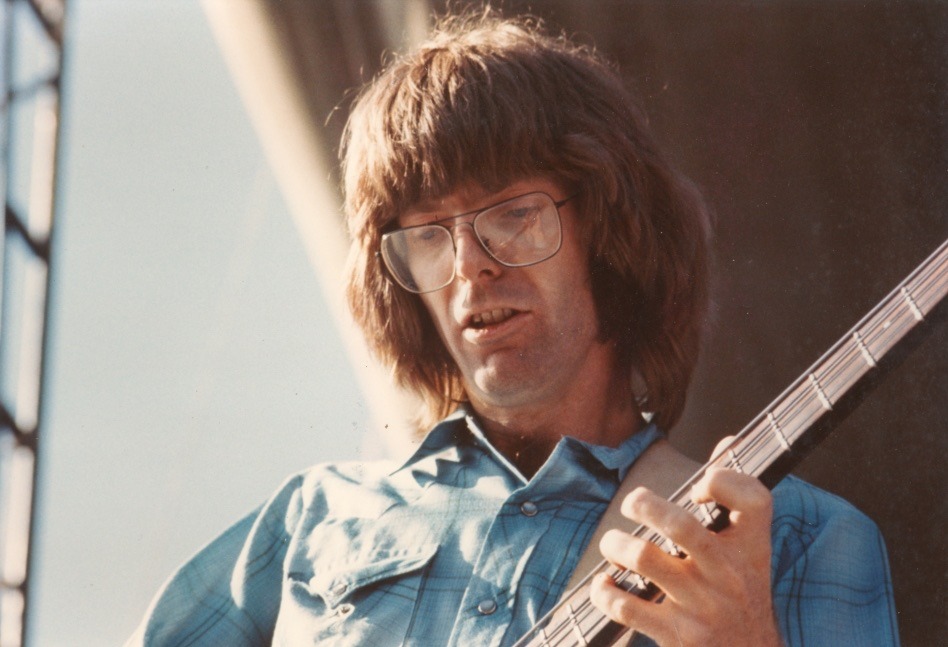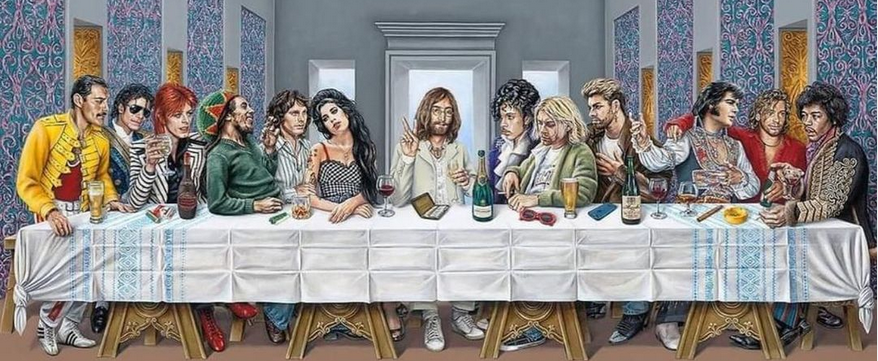
Phil Lesh was born Philip Chapman Lesh on March 15, 1940, in Berkeley, California. A visionary musician, Lesh redefined bass playing in rock music and left a lasting legacy as a founding member of the Grateful Dead.
As the bassist for the Grateful Dead from their formation in 1965 until their disbanding in 1995, Lesh’s innovative approach to the instrument and his improvisational skill shaped the sound of one of rock’s most iconic bands. His musical journey, marked by a fusion of classical training, avant-garde jazz influence, and collaborative spontaneity, has had a profound impact on American music and on countless fans worldwide.
Early Life and Musical Beginnings
Phil Lesh’s life in music began in his youth, long before the Grateful Dead came to be. Born to a musically inclined family, he showed a fascination with music from an early age, gravitating first toward the violin. However, it was the trumpet that became his primary instrument during his teenage years.
Phil Lesh pursued formal music education at Berkeley High School, where he studied under music teacher Robert Oppelt, and later attended the College of San Mateo. Lesh’s interest in jazz, especially the experimental sounds of John Coltrane and Miles Davis, greatly influenced his approach to music. His tastes drew him towards the avant-garde, which was considered radical in the conservative classical music circles of the time. Lesh eventually transferred to the University of California, Berkeley, where he studied under composer Luciano Berio and delved into 20th-century classical music.
It was during these formative years that Lesh’s understanding of music as a space for experimentation and boundary-breaking took shape. Though primarily a trumpet player with ambitions to become a composer, Lesh’s friendship with Jerry Garcia, another musician from the local scene, ultimately shifted his musical trajectory. Garcia was forming a band that would become the Warlocks, a precursor to the Grateful Dead, and he invited Lesh to join as the bassist—despite Lesh never having played bass before.
Joining the Grateful Dead and Learning the Bass
In 1965, with the encouragement of Garcia, Phil Lesh accepted the challenge to learn the bass guitar and joined the Warlocks, which soon transformed into the Grateful Dead. Though the bass was a new instrument for him, Lesh’s deep understanding of music theory and his affinity for improvisation allowed him to adapt quickly. He approached the bass differently from most rock musicians, applying principles from his classical and jazz background. Rather than simply providing rhythm, Lesh saw the bass as a melodic and harmonic instrument. His unique style involved using counterpoint and playing melodic lines, which gave the Grateful Dead’s music a distinctive sound.
Lesh’s bass playing became the backbone of the Grateful Dead’s jams, contributing to the band’s immersive, free-form performances. In these performances, the band and audience often felt connected in a deeply emotional experience, emblematic of the 1960s countercultural “San Francisco Sound.” With Lesh anchoring the rhythm while simultaneously weaving intricate melodic lines, the band was free to explore new musical territories during their live shows.
.
.
The Grateful Dead Years: Innovation and Influence
Phil Lesh’s tenure with the Grateful Dead spanned three decades, from the 1960s until the band’s end in 1995, following the death of Jerry Garcia. During this time, Lesh and his bandmates became pioneers of the jam band genre, famous for their live performances that could stretch a single song into extended improvisational journeys. Lesh’s bass lines provided a crucial element to these jams, often taking on a lead role that was traditionally reserved for guitars. His ability to play against the rhythm and weave complex harmonic lines into the music set him apart from other bass players of the time.
Lesh’s approach to bass playing also reflected the band’s collective philosophy toward music. The Grateful Dead’s sound was a blend of folk, rock, blues, country, and psychedelia, with each member contributing equally to the musical conversation. Lesh’s classical and jazz background allowed him to transcend traditional bass techniques and use the instrument as a vehicle for harmonic exploration. His contributions to albums like Live/Dead (1969), American Beauty (1970), and Europe ’72 (1972) captured his creative synergy with the band and showcased his role in pushing the boundaries of rock music.
The band’s legendary concerts became a spiritual experience for its followers, known as Deadheads. Phil Lesh’s role as a performer during these concerts was dynamic and exploratory, and he was known for his ability to listen attentively to his bandmates and respond to the music unfolding in real-time. His playing formed a musical dialogue with lead guitarist Jerry Garcia, rhythm guitarist Bob Weir, and the band’s dual drummers, Bill Kreutzmann and Mickey Hart.
The Wall of Sound and Technological Experimentation
Phil Lesh’s impact on music extended beyond his bass playing and into sound engineering and live audio technology. In 1974, he was instrumental in the creation of the “Wall of Sound,” an enormous sound system developed with the band’s sound engineer, Owsley Stanley. The Wall of Sound was designed to deliver clear, distortion-free audio to massive audiences, a revolutionary feat at the time. Each instrument had its own dedicated speaker array, allowing the sound to be mixed directly on stage. Lesh’s bass, for example, was channeled through an array of speakers that could project his bass lines with clarity and depth across outdoor venues.
Although the Wall of Sound was eventually deemed too costly and complex to sustain, it was an ambitious innovation that influenced the evolution of concert sound systems. The concept of creating a sonic environment where each instrument could be distinctly heard would go on to inspire generations of live sound engineers and is considered one of the earliest examples of immersive audio design in live rock performance.
Life After the Grateful Dead and Phil Lesh & Friends
Following the death of Jerry Garcia in 1995 and the dissolution of the Grateful Dead, Lesh continued to explore music and collaborate with other musicians. He formed the band Phil Lesh & Friends, a rotating ensemble of musicians from different backgrounds, which allowed him to continue the Grateful Dead’s legacy of collaborative improvisation. Phil Lesh & Friends brought together a diverse group of musicians from jam bands, rock, and jazz, including Warren Haynes, Trey Anastasio, and John Scofield. Lesh’s role in this band was much the same as it had been in the Grateful Dead: a leader in musical exploration who encouraged free-form jamming and a sense of shared creativity among his bandmates.
Phil Lesh also joined other former Grateful Dead members in groups like The Other Ones and Furthur, which kept the Dead’s music alive for a new generation of fans. Through these projects, Lesh played a pivotal role in extending the legacy of the Grateful Dead and sharing their music with audiences who had not been alive to witness the original band. His continued enthusiasm for live performance and dedication to the fans was evident through his many tours and festival appearances.
Personal Life, Health Struggles, and Philanthropy
In the late 1990s, Phil Lesh faced serious health challenges, including a liver transplant in 1998 due to chronic hepatitis C. This experience motivated him to advocate for organ donation and health awareness, becoming an active spokesperson for the cause. His passion for giving back to the community was a driving force in his life. Lesh and his wife, Jill, founded Terrapin Crossroads, a music venue in San Rafael, California, in 2012. Terrapin Crossroads became a community hub where musicians could collaborate, experiment, and perform in an intimate setting, echoing the Grateful Dead’s philosophy of shared musical experiences.
Through his work at Terrapin Crossroads, Lesh sought to foster a space for creative expression and musical education, especially for young musicians. The venue hosted live performances, workshops, and jam sessions, and provided a supportive environment for new talent. This community-centered approach to music-making was a hallmark of Lesh’s career, reflecting his belief in the power of music to bring people together.
.

.
Legacy and Influence
Phil Lesh’s legacy as a musician and innovator is deeply ingrained in the history of rock music. His unorthodox approach to bass playing revolutionized the role of the bass guitar in popular music. By treating the bass as a melodic instrument capable of leading the music rather than merely supporting it, Lesh inspired generations of bassists to think beyond traditional boundaries. His influence can be heard in the work of countless musicians across genres, from rock to jazz and beyond.
His contributions to sound technology, particularly through the Wall of Sound, set new standards for live performance and audio quality. Lesh’s commitment to creating a unique listening experience for his audience demonstrated his dedication to the craft of live performance, a dedication that remains a defining characteristic of the Grateful Dead’s legacy.
Phil Lesh’s role as a cultural figure within the counterculture movement of the 1960s and 70s also contributes to his lasting impact. The Grateful Dead embodied the spirit of an era, and Lesh was an integral part of that ethos, helping to shape a generation’s ideas about music, freedom, and community. His open-minded approach to collaboration and his willingness to embrace improvisation created a model for how music could be a journey rather than a destination, an approach that resonates with artists and fans to this day.
Conclusion
Phil Lesh’s life and career were a testament to the power of music as a transformative and communal force. From his beginnings as a jazz trumpet player to his pioneering work with the Grateful Dead and beyond, Lesh consistently pushed the boundaries of what was possible with his instrument and in music as a whole. His unique approach to the bass guitar, commitment to live performance, and influence on sound technology have secured his place as a visionary in American music.
Phil Lesh’s contributions will continue to influence future generations of musicians, and his dedication to community and collaboration serves as an enduring reminder of the values that made the Grateful Dead one of the most beloved bands in rock history. His legacy, as both an artist and a person, will live on in the music and memories he created with fans worldwide, leaving an indelible mark on the cultural landscape of the 20th century and beyond.
Phil Lesh died on October 25, 2024, at the age of 84.
Check out Phil Lesh on Amazon.
Check out The Greatful Dead on Amazon.
If you found this interesting please share it with your friends and family, and check out some of our other articles on Musicians who Died in 2024.
.

